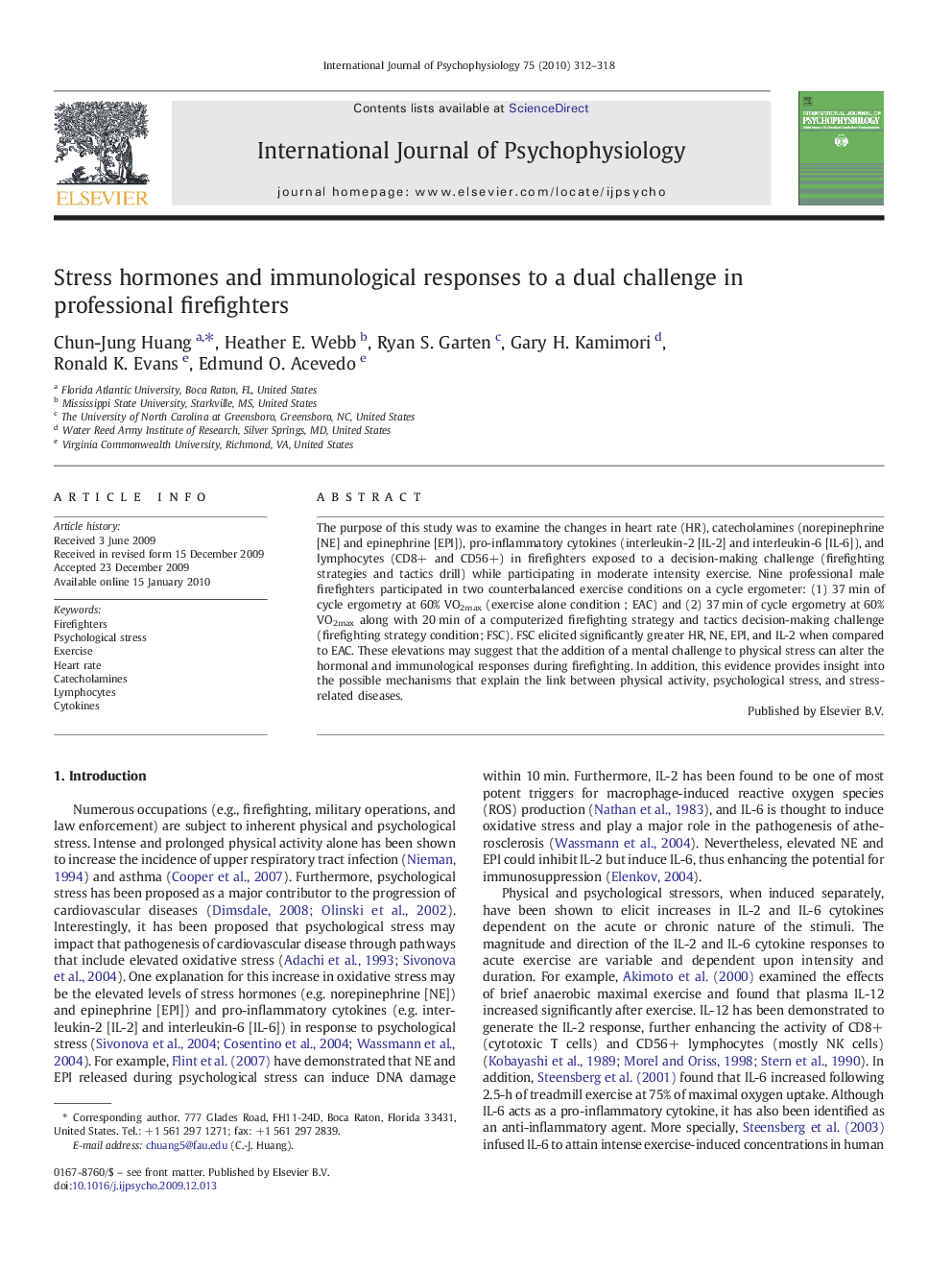| Article ID | Journal | Published Year | Pages | File Type |
|---|---|---|---|---|
| 7296291 | International Journal of Psychophysiology | 2010 | 7 Pages |
Abstract
The purpose of this study was to examine the changes in heart rate (HR), catecholamines (norepinephrine [NE] and epinephrine [EPI]), pro-inflammatory cytokines (interleukin-2 [IL-2] and interleukin-6 [IL-6]), and lymphocytes (CD8+ and CD56+) in firefighters exposed to a decision-making challenge (firefighting strategies and tactics drill) while participating in moderate intensity exercise. Nine professional male firefighters participated in two counterbalanced exercise conditions on a cycle ergometer: (1) 37Â min of cycle ergometry at 60% VO2max (exercise alone condition ; EAC) and (2) 37Â min of cycle ergometry at 60% VO2max along with 20Â min of a computerized firefighting strategy and tactics decision-making challenge (firefighting strategy condition; FSC). FSC elicited significantly greater HR, NE, EPI, and IL-2 when compared to EAC. These elevations may suggest that the addition of a mental challenge to physical stress can alter the hormonal and immunological responses during firefighting. In addition, this evidence provides insight into the possible mechanisms that explain the link between physical activity, psychological stress, and stress-related diseases.
Related Topics
Life Sciences
Neuroscience
Behavioral Neuroscience
Authors
Chun-Jung Huang, Heather E. Webb, Ryan S. Garten, Gary H. Kamimori, Ronald K. Evans, Edmund O. Acevedo,
